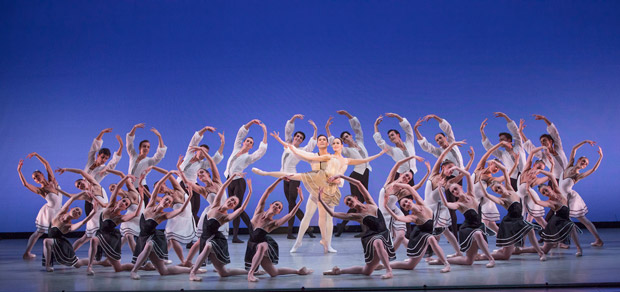
© Paul Kolnik. (Click image for larger version)
Suzanne Farrell Ballet
Danses Concertantes, Gounod Symphony, Stars and Stripes
★★★★✰
Washington, Kennedy Center Eisenhower Theater
21, 22 (mat) October 2016
Company Website
www.kennedy-center.org
For its 15th anniversary season the Suzanne Farrell Ballet treated the Washington audience to a sumptuous all-Balanchine bill that comprised Danses Concertantes, Gounod Symphony, and Stars and Stripes. Watching this immensely entertaining program one realizes that even a minor Balanchine ballet is still a great ballet. None of the three works on the program is considered a masterpiece. However, Farrell and her troupe brought the best qualities in all three pieces, turning each of them into a sparkling gem.
With its elaborate designs, vivid colors and plush theatricality, Danses Concertantes is a tribute to the era of the Ballets Russes. “Brilliantly animated and brilliantly civilized,” Edwin Denby said of the original 1944 version of the ballet which was inspired by Stravinsky’s music of the same title. At that time Balanchine was resident choreographer of the Ballet Russe de Monte Carlo and Danses was his first creation for the troupe. Nearly three decades later, Balanchine completely recreated the ballet for the 1972 New York City Ballet’s Stravinsky Festival; and it was this latest version that Farrell staged for her company in 2012 as part of her Balanchine Preservation Initiative. It was good to see this fabulous theatrical concoction back on the stage.
Danses unfolds as a colorful parade of several trios for the supporting ensemble, followed by a quirky pas de deux for the principle couple, with the dancers evoking a troupe of traveling artists or circus entertainers. It begins and ends with a lively promenade for the entire cast in front of an opulent curtain which displays the names of the ballet’s creators. The décor and brightly-colored costumes suggest the Italian spirit of commedia dell’arte; and the bubbly choreography, full of thrusting hips, flexed feet and angular arms movements, all spiced with wit and humor, is a brilliant example of Stravinsky-Balanchine collaboration which, in this case, demonstrates the lighthearted side of both artists.
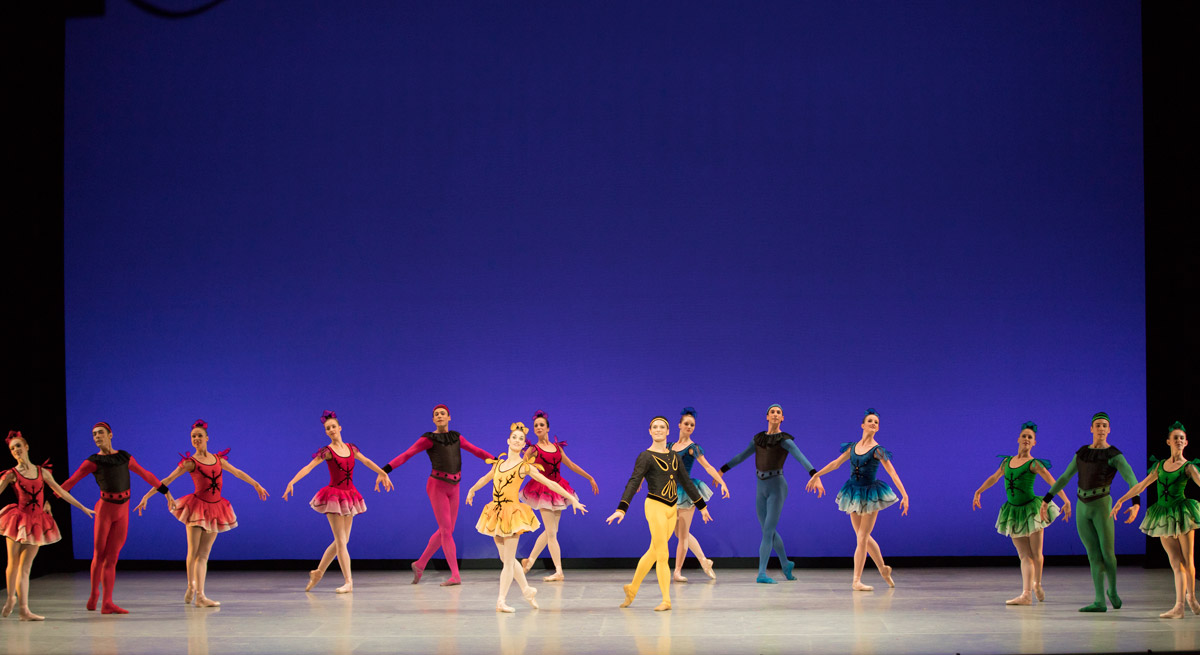
© Paul Kolnik. (Click image for larger version)
On opening night, the Farrell troupe instilled this work with fresh, youthful energy, delivering a highly animated, if not always technically refined, performance. The company’s soloist Valerie Tellmann-Henning and first soloist Kirk Henning brought the exuberant playfulness of the leading roles to the fore, imbuing the jester-like steps of the choreography with ardor and a special effervescent charm. The eloquent Natalia Magnicaballi (aptly partnered by Stéphano Candreva) made an impressive turn in the pas de deux at the matinee performance on Saturday, dancing with a crisp technique and perfect comic timing; hers was a charming and flirtatious Columbine, who couldn’t help but tease the life out of Candreva’s gentle, pining Harlequin.
With a newly-restored Gounod Symphony, Farrell emerged once again as a peerless guardian of the Balanchine legacy. Choreographed in 1958 to Charles Gounod’s Symphony No. 1 in D Major, this is a rarely performed piece (it was last danced by NYCB in 1993); and with her meticulous and insightful staging, Farrell gave this “forgotten” Balanchine work a new look and a new life.
When the curtain rose on the ballet’s opening tableaux – all 32 dancers of the cast assembled center stage in an elaborate diadem-like pattern – the audience erupted into spontaneous applause. This was a Gounod Symphony like no one has ever seen before.
Farrell stripped the ballet of its original “garden-inspired” scenery and pink-and-yellow costumes, opting for the minimal look and brand-new stylish attire – white dresses with black trims or black dresses with white trims for the women and white jackets and black slacks for the men – fashioned by Holly Hynes. The new costumes gave the entire ballet a chic, modern appeal as well as accentuating the ever-changing architectural interplay between the ensemble and the principal couple, revealing the choreography in a different light.
Gounod Symphony is Balanchine’s love letter to the corps de ballet, in which the ballet master conjured group dancing for 20 women and 10 men of astonishing intricacy and beauty. In the course of the dance, the ensemble becomes an ever-evolving organism, expanding and contracting; morphing into various shapes and patterns; forming and dissolving lines, crosses, and starts. Here the variety of geometric formations seems to be infinite; their visual impact is stunning.
In its current reincarnation, Gounod Symphony looks nothing less than a masterpiece; and the excellent cast gave it a fitting treatment, dancing with assured ease and admirable precision. Natalia Magnicaballi and Michael Cook (on opening night) and the effervescent Allynne Noelle and Thomas Garret (on Saturday matinee) sparkled in the pas de deux, which in this work seems more like a mere ornament than a shining centerpiece.
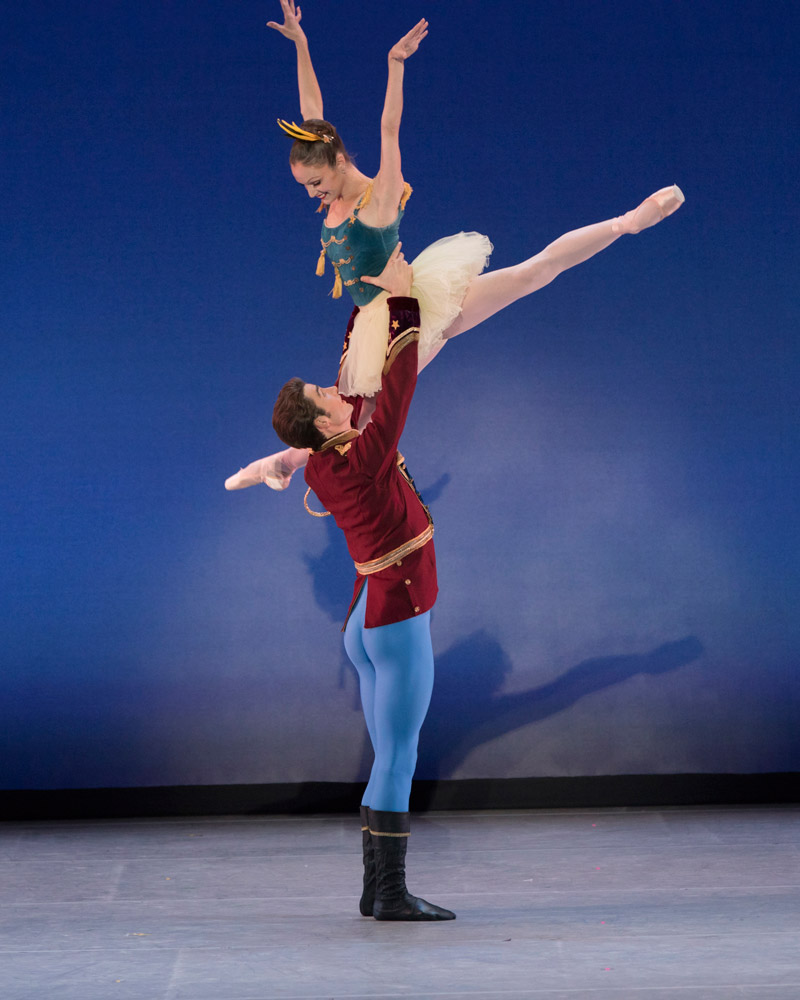
© Paul Kolnik. (Click image for larger version)
Balanchine’s salute to his adoptive country and an affectionate nod to his Broadway past, Stars and Stripes concluded this spectacular program on a cheerful note. Patriotic and humorous, accompanied by spunky marches of John Philip Sousa, this ballet wittily blends the classical idiom and cheerleading swagger, giving the audience plenty of reasons to smile. Dressed in red-white-and-blue, the superb cast telegraphed Balanchine’s dancing jokes with aplomb and skill. The suave Kirk Henning led the male regiment with exciting flair; Valerie Tellmann-Henning’s cheerful command of the Corcoran Cadets was also noteworthy; and Allynne Noelle and Thomas Garrett shone in the pas de deux of the fourth campaign, always staying in character and dancing with a thrilling bravado.
This was the penultimate season of the Suzanne Farrell Ballet. As was recently announced, the company, which is housed and financed by the Kennedy Center, will sadly close after a final series of performances in 2017.










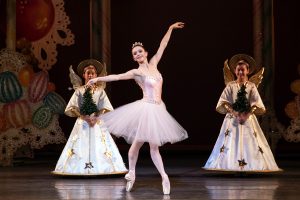
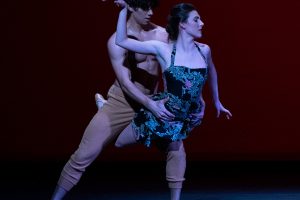

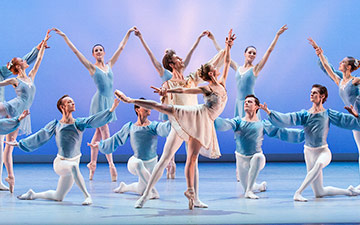
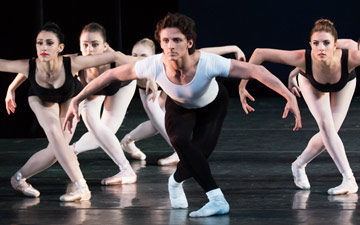

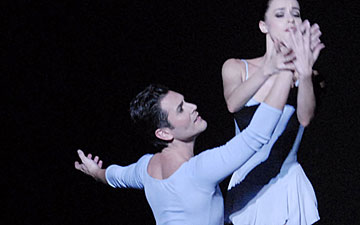
You must be logged in to post a comment.